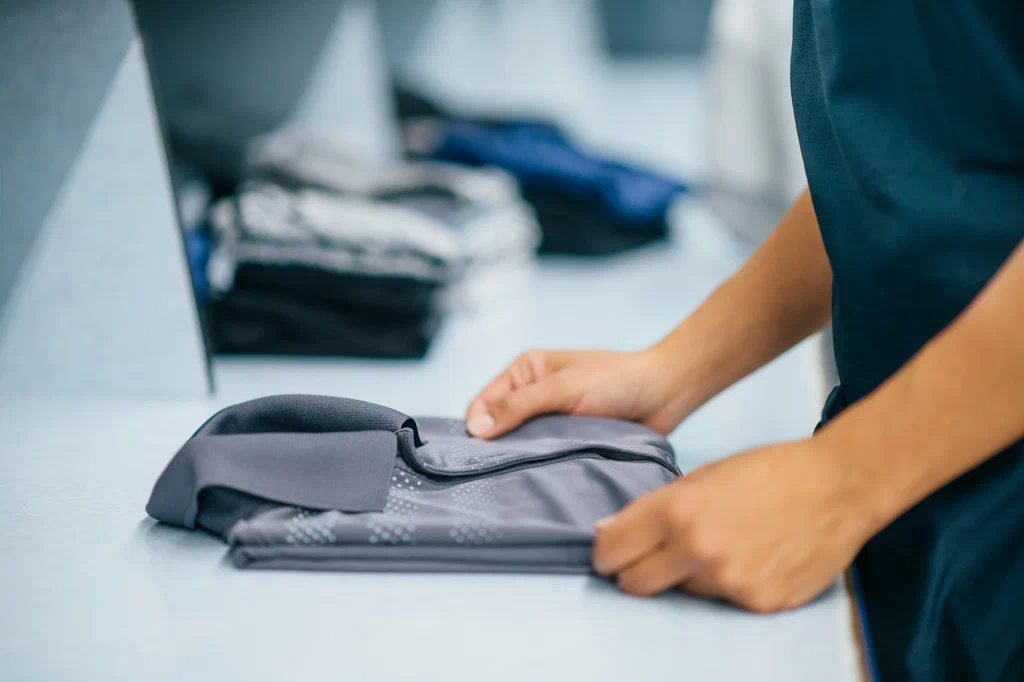Laundry is an essential chore in every household, but it becomes even more critical when handled by professional cleaning services. One of the most frequently asked questions by customers seeking laundry solutions is: “Do you separate clothes by color and fabric type during laundry service?” The short and simple answer is yes. However, there is a lot more involved in the process that underscores why separation is vital, how it is done, and the benefits it brings to the overall quality of laundry services.
Why Separation Matters In Laundry?
Separation of laundry by color and fabric type is not just a recommendation; it is a foundational practice in professional cleaning. Mixing clothes without sorting can lead to several issues, including color bleeding, fabric damage, uneven washing, and reduced garment life. Let’s explore why this practice is a golden rule in laundry services:
- Preventing Color Transfer: Dark and bright-colored clothes tend to bleed, especially during the first few washes. Washing them with light-colored or white clothes can lead to discoloration, ruining multiple garments at once.
- Preserving Fabric Integrity: Different fabrics require different wash cycles, water temperatures, and detergents. For example, delicate fabrics like silk or lace need gentle handling, while denim or towels can withstand more aggressive washing. Mixing them can cause unnecessary wear and tear.
- Optimizing Detergent Use: Certain fabrics and colors respond better to specific detergents. A professional laundry service takes care to select the most suitable cleaning agents based on the sorted load.
- Improved Stain Removal: Pre-treating stains is more effective when fabrics are sorted, as some stain removers may work well on cotton but not on wool or synthetic materials.
- Maintaining Garment Shape: Fabrics such as wool, rayon, and knits can lose their shape when combined with heavy items like jeans or jackets. Sorting helps preserve the original shape and texture.
The Professional Sorting Process
At DustFix and similar professional laundry services, the sorting process follows a meticulous step-by-step system to ensure optimal results:
1. Initial Inspection
Before washing begins, each item of clothing is inspected for stains, fabric type, color intensity, and any special handling instructions from the label. This assessment guides the sorting strategy.
2. Color Sorting
Clothes are separated into key color categories:
- Whites
- Lights (pastels, light grey, beige)
- Darks (black, navy, charcoal)
- Brights (red, purple, green, etc.)
This step helps reduce the risk of dye transfer and ensures whites remain bright.
3. Fabric Sorting
Fabrics are then sorted by type:
- Delicates (lace, silk, lingerie)
- Durable fabrics (denim, canvas)
- Everyday wear (cotton, polyester blends)
- Towels and linens
Each category is washed using machine settings tailored to its specific requirements, ensuring both fabric longevity and cleanliness.
4. Special Care Items
Garments that require handwashing or special cycles (e.g., wool sweaters, embroidered clothing) are tagged and set aside for separate treatment.
5. Load Balancing
To prevent overloading or underloading the machine, each batch is weighed and evenly distributed. This helps improve detergent efficiency and reduces water and energy consumption.
Benefits Of Professional Sorting
Engaging a laundry service that separates clothing by color and fabric offers tangible benefits:
- Garment Longevity: Regular sorting helps maintain fabric strength and appearance.
- Color Brightness: Clothes retain their original vibrancy without dulling.
- Stain-Free Whites: Whites remain clean and untainted by dye transfer.
- Better Washing Results: Cleaner, fresher clothes with no detergent residue.
- Time Savings: Customers don’t need to pre-sort, making the service more convenient.

Common Myths About Laundry Sorting
Let’s debunk some of the common myths about laundry sorting that often confuse people:
- Myth 1: Cold Water Prevents Color Bleeding – While cold water reduces the risk, it doesn’t eliminate it entirely. New, brightly colored garments can still bleed.
- Myth 2: All Fabrics Can Be Washed Together on Gentle Cycle – A gentle cycle may not clean heavy fabrics properly and may still damage delicate ones when mixed.
- Myth 3: New Washing Machines Eliminate the Need for Sorting – Technology helps, but machine settings are only as good as the preparation of the load.
How Customers Can Help?
Though DustFix handles sorting professionally, customers can assist in the process by:
- Checking care labels before sending garments
- Letting the service know if an item is new or prone to bleeding
- Not mixing dry-clean-only items with regular laundry
This collaboration ensures even higher quality service and garment care.
What Sets Dustfix Apart?
At DustFix, we believe in attention to detail and garment integrity. Our experienced laundry team undergoes regular training on textile science, detergent chemistry, and machine care. We use:
- Eco-friendly detergents tailored to different fabrics
- pH-balanced solutions for delicate skin
- Color catchers and fabric conditioners when appropriate
- Modern equipment with precise water temperature control

Conclusion
Separating clothes by color and fabric type is not just a routine but a necessity in professional laundry service. It preserves the quality, appearance, and lifespan of your garments, ensuring that every wash delivers fresh, clean, and well-maintained clothing. When you choose a trusted laundry service like DustFix, you can rest easy knowing your garments are cared for with industry-best practices.

